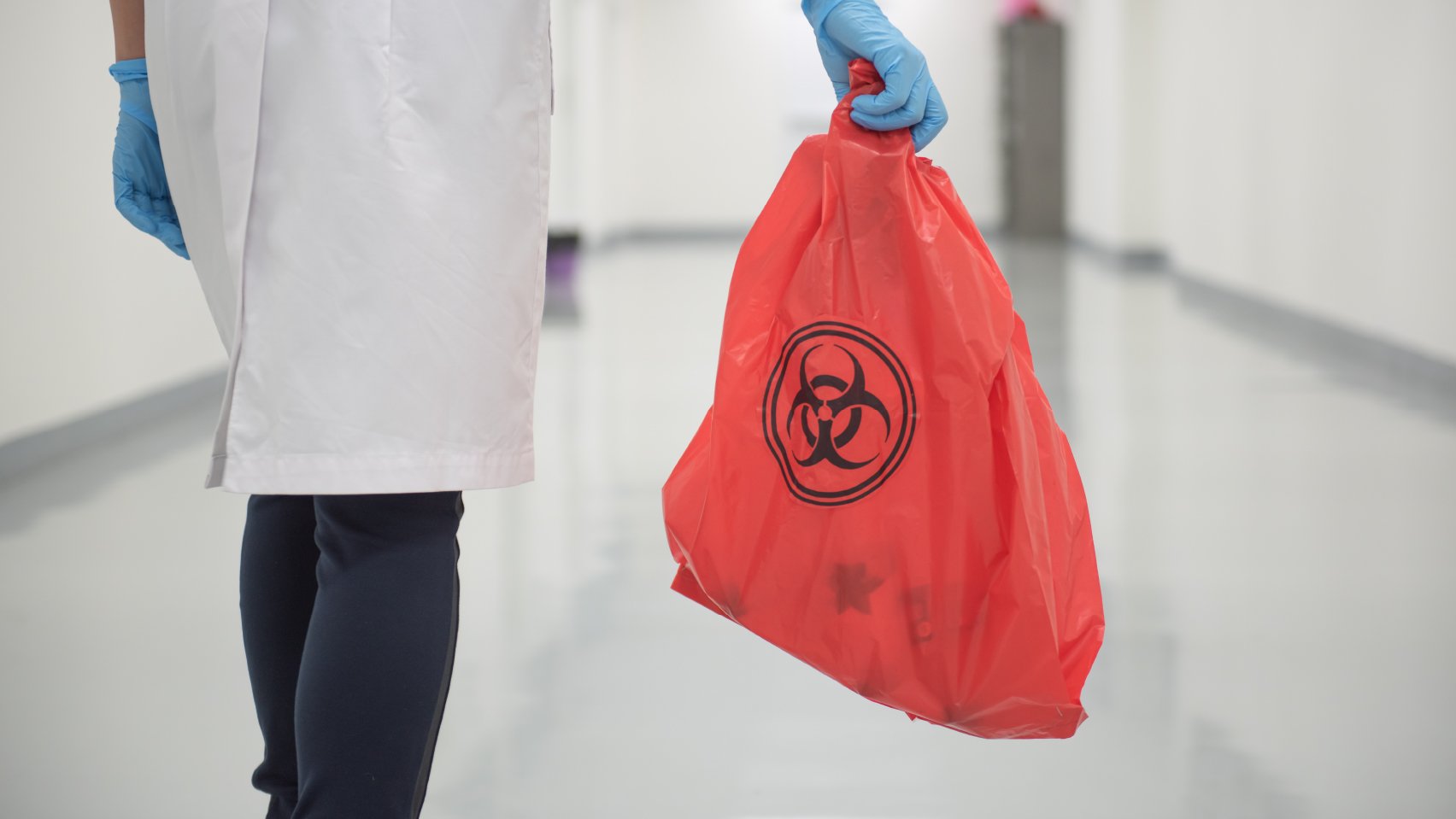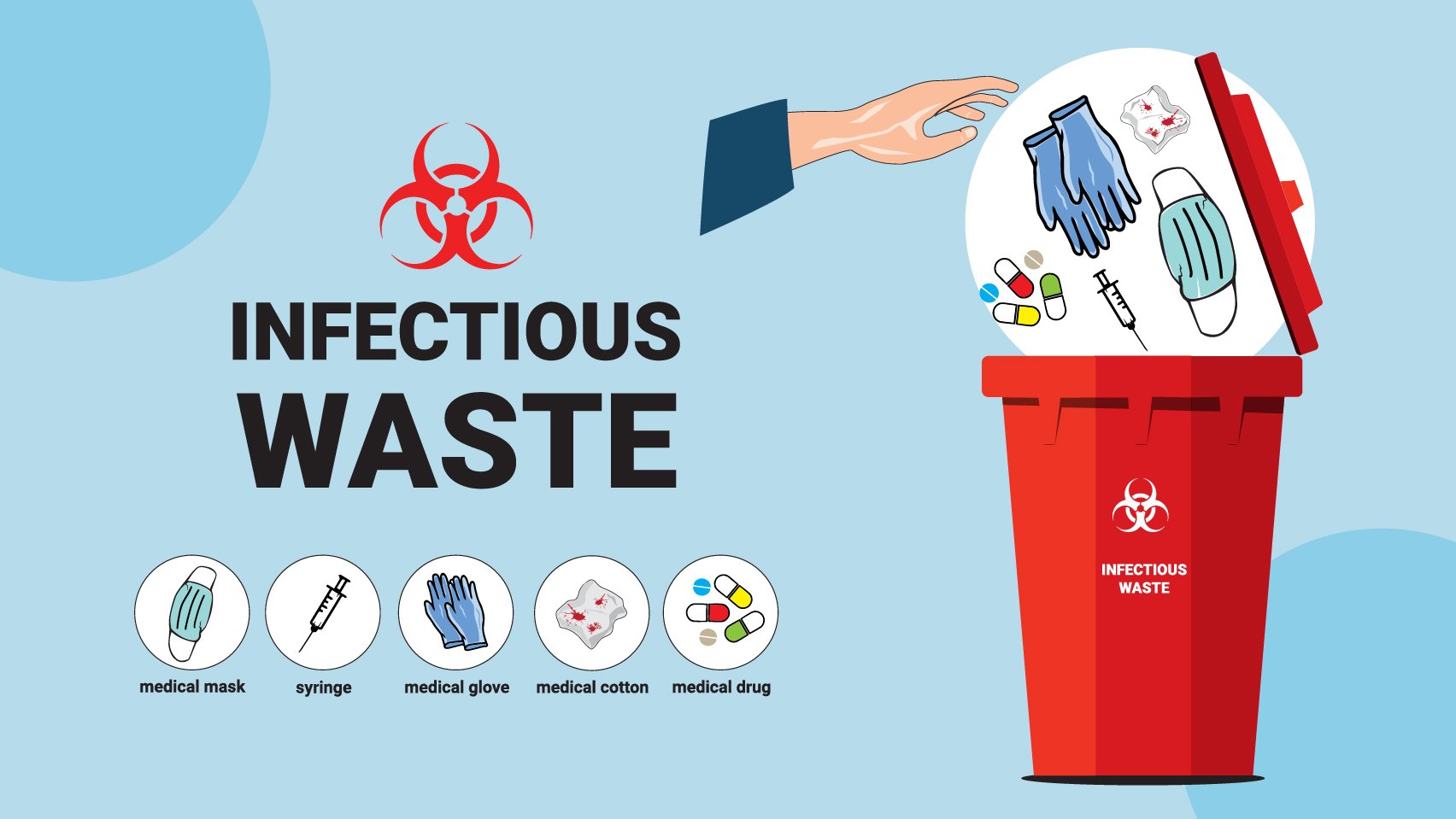Color coding is one of the most effective ways to keep things organized and orderly, across all applications. But, when it comes to disposing of clinical waste, it is vital to stick to a rigid waste management system, for several reasons. Specifically, color coding for dental waste disposal has environmental implications, in addition to the pre-existing health and safety ones.
The waste from dental practices is roughly 85% non-hazardous waste, and 15% hazardous, meaning it can cause or spread infections to other people if they are exposed to it. Safe handling of this waste is vital to ensure that infections are not spread to other people; color coding waste disposal bins provides a visual indication of the potential risk posed by the waste inside.

What Are the Different Colored Bins For?
The colors for each type of medical waste are ideally kept constant, not just in a single medical facility, but across all medical facilities. To stop the spread of diseases, the World Health Organization (WHO) has its own recommended color-coding system for waste disposal:
- Black is used for general non-infectious, non-hazardous waste.
- A lead box with any color and a radiation symbol for radioactive waste.
- Brown with a warning symbol signifies chemical or pharmaceutical waste.
- The Environmental Protection Agency (EPA) defines pharmaceutical waste as expired, unwanted, or unused pharmaceuticals.
- Yellow with a biohazard symbol for infectious waste, pathological waste, and sharp wastes.
- Sharp wastes are classified by the U.S. Food and Drug Administration (FDA) as any device or object used to puncture or lacerate the skin.
However, other government departments around the world have their own color-coding systems that bear some similarities to the WHO’s but still have key differences. One of the more prominent examples is the U.K.’s Department of Health and Social Care, which has been adopted around the world and can be seen in many medical facilities.
Color-coding is necessary to keep the different types of medical waste separate; attempting to separate the waste once it’s all mixed together is unsafe and increases the risk of infection. Use of any colored bin other than the above colors for general waste is acceptable.
To avoid confusion, make sure all waste containers in the same stream are the same color: if there are red small bins in examination rooms for infectious waste, then larger containers for infectious waste should also be red. If you use black for non-hazardous waste, use black for all such containers throughout the facility, so on and so forth.

What Are the Classifications of Dental Waste?
Dental waste can be divided into four different categories: amalgam waste, hazardous waste, pharmaceutical waste, and sharp wastes. Dental amalgam waste refers to anything that contains a mixture of liquid mercury and an alloy of silver, copper, tin and zinc. Colloquially referred to as, “silver fillings,” this mixture is used to fill cavities, but it can also appear in vacuum pump filters and saliva ejectors.
Dental amalgam can get into the ecosystem if disposed of improperly, so the EPA requires it to be handled in specific ways. Due to being a mixture of metals, one of the most effective ways to prevent this amalgam waste from entering the environment is through the use of amalgam separators and an amalgam recycling program.
In 2017, the EPA ruled that amalgam separators must achieve at least a 95% removal efficiency. That separated amalgam waste cannot then be discarded in the trash. Instead, it must be sent to a facility that specializes in melting the metals and recycling that mercury. Therefore, amalgam waste needs to be placed in its own distinct container.
Meanwhile, for hazardous waste to be classified as such, it must exhibit one of the following traits: ignitability, reactivity, corrosivity, or toxicity. Hazardous waste can be solid, liquid, or gas, which affects how it should be handled. With so many different types of medical waste, it is easy to see why it is important to effectively implement color coding for dental waste disposal.
Properly Color Coding for Dental Waste Disposal
With the different types of medical waste produced by dental practices now clearly outlined into individual categories, it becomes easier to practice proper color coding for dental waste disposal.
Using the WHO’s recommended waste management scheme, a proper, color-coded waste disposal system for dental waste would consist of:
- Hazardous waste is placed in strong, leak-proof yellow containers/bags and marked with, “HIGHLY INFECTIOUS.”
- These containers should be collected either when three-quarters full, or at least once a day.
- Sharp wastes go in red containers instead of bags to avoid punctures and should be marked with, “SHARPS,” to distinguish it from hazardous waste containers.
- Pharmaceutical waste goes in brown plastic bags or rigid containers.
- Pharmaceutical waste containers should be collected on demand.
- Dental amalgam would be defined as non-hazardous waste and can be disposed of in black plastic bags or containers to then be sent off to a facility for separation.
Making sure clinical waste is properly stored and disposed of is essential for keeping both ourselves and our environment safe and healthy. For dental practices in search of a safe way to dispose of medical waste, MedCycle offers an array of solutions waste disposal services.
Additionally, MedCycle also offers its online compliance portal, a trusted resource to thousands of businesses for compliance information, tools and training. Contact us today for a free quote, and see how MedCycle can help you.
